Histology (Alb) Lecture 2 for Exam 1
Pineado a
612
1
0
|
|
Creado por Marissa Alvarez
hace más de 7 años
|
|
Cerrar
|
|
Creado por Marissa Alvarez
hace más de 7 años
|
|

Where is this epithelium found, what are its important features and how does it function within its organ?
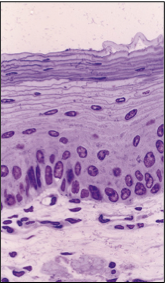
Extent of epithelial tissue
(epithelial tissue is EVERYWHERE)
Major Functions of Epithelium
Diseases directly related to epithelia
General Features of Epithelial Tissues
Classification of Epithelia
1. Number of cell layers
2. Cell Shape
Shapes of cells in SIMPLE epithelium
Shapes of cells in SIMPLE epithelium
SQUAMOUS
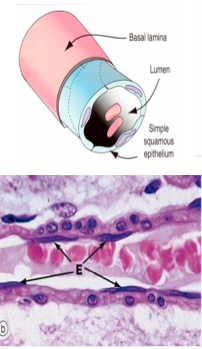
Shapes of cells in SIMPLE epithelium
CUBOIDAL
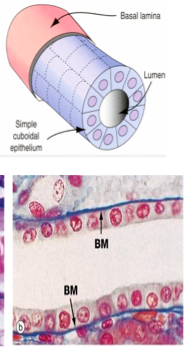
Shapes of cells in SIMPLE epithelium
COLUMNAR
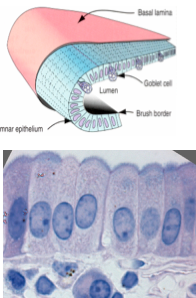
REMEMBER!
Epithelia are
named based on the
cell shape of the
Shape of cells in STRATIFIED epithelia
Stratified squamous
Shape of cells in STRATIFIED epithelia
Stratified cuboidal
Shape of cells in
PSEUDOstratified epithelia
Shape of cells in
TRANSITIONAL epithelia
Major types of epithelia
SIMPLE Squamous
Endothelium VS Mesothelium
Major types of epithelia
Stratified squamous, keratinized:
SKIN
Major types of epithelia
SIMPLE Cuboidal
Kidney tubules, thyroid gland (ducts)
Major types of epithelia
Simple columnar with BRUSH border and GOBLET cells:
(small intestine)
Apical Cell surface specializations:
Microvilli
(short, straight, and stiff, filled w/actin)
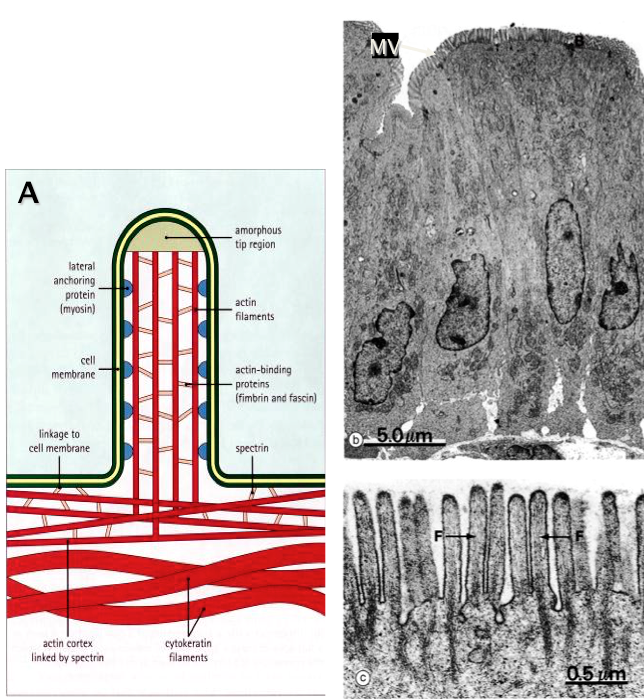
Apical Cell surface specializations:
Cilia
(much longer, can MOVE, strong, & diff. composition)
Sensory Specialization:
Taste Buds
How do epithelial cells attach and communicate?
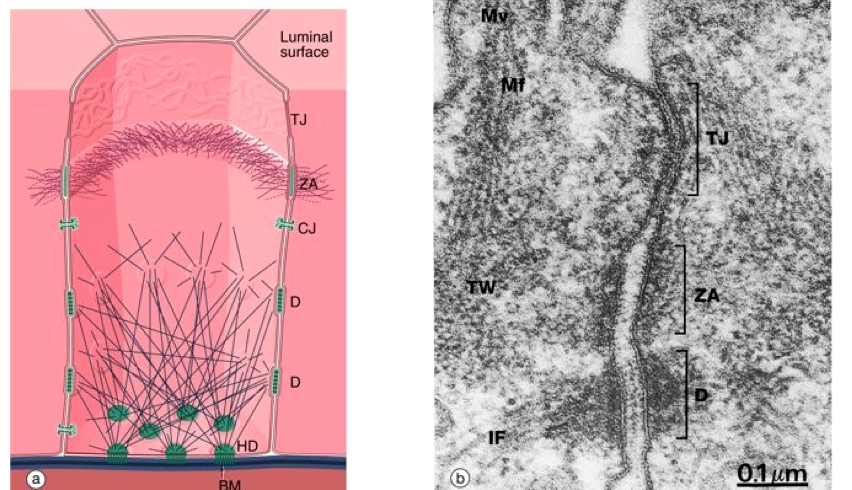
Gap junction (communicating junction)
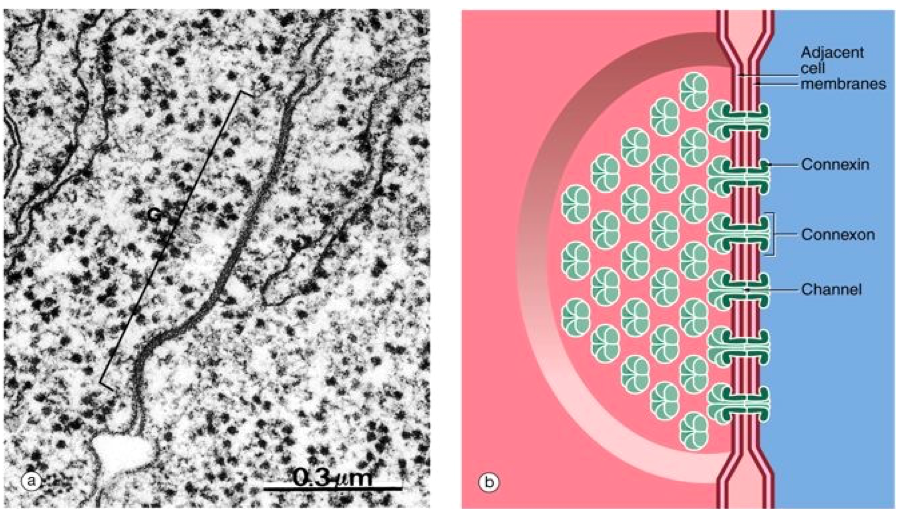
GLANDS
Specialized epithelial structures
Exocrine VS Endocrine
Formation and classification of glands
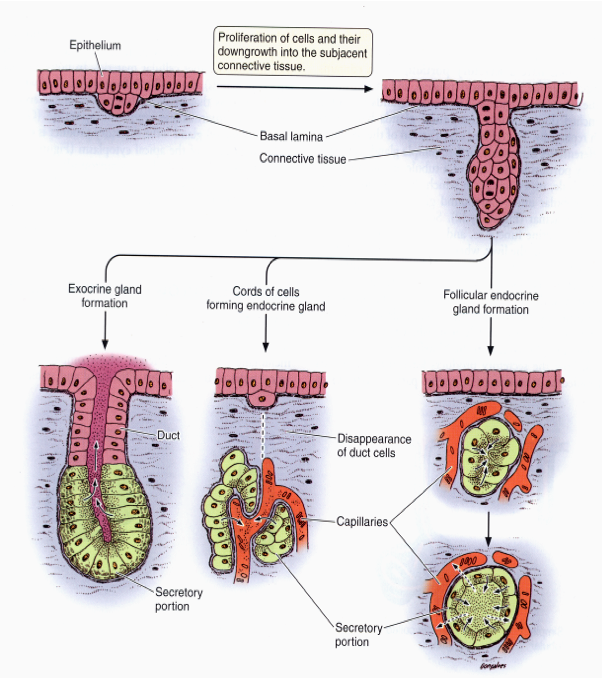
Single-cell EXOcrine gland:
the goblet cell
MORE EXOcrine Gland examples
Tubular gland of colon
&
Sweat Gland
Example of Branched Exocrine Gland:
Tracheal glands
Endocrine Single Cell
endocrine, paracrine, autocrine, intracrine
ENDOcrine Multicellular
Pancreas Islet (no secretory ducts, blood vessels present)
&
Thyroid
(simple cuboidal epithelium)
Exam Question
What Type of Epithelium is this?
A. Stratified squamous
B. Simple cuboidal
C. Simple squamous
D. Transitional
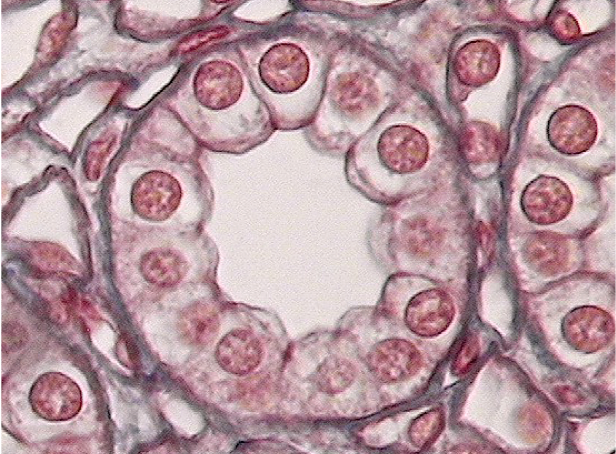

 Ocultar las fichas que te sabes
Ocultar las fichas que te sabes